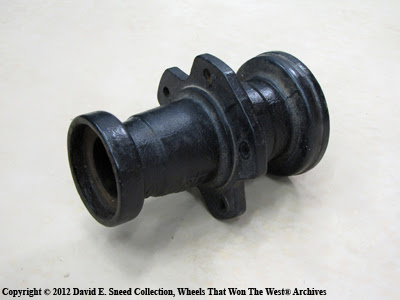Throughout 200 years of horse drawn wagon manufacturing in the U.S, there were a lot of innovations and transitions – not just in the vehicle design and production processes but in the development of accessories as well.
While some farmers and ranchers merely cut down the wooden wheels on their wagons and had them placed inside steel rims with rubber tires, others took advantage of skein adaptors that could be bolted to traditional vehicle rims. These types of adaptors could be purchased from a number of outlets including large catalog houses like Montgomery Ward.


